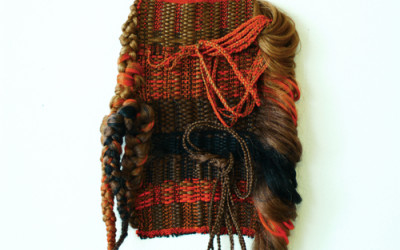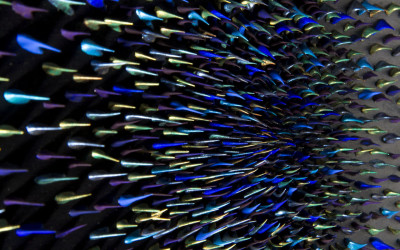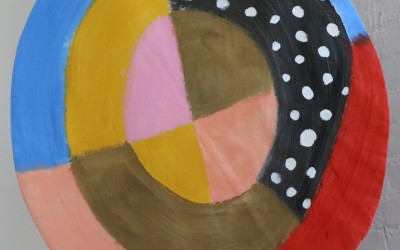WAM: Supporting Women Artists in the Midwest
The first notable exhibition of women artists in the Kansas City area was Women Artists ‘77, organized by the now-defunct Kansas City Chapter of the National Women’s Caucus for Art and juried by feminist artist Miriam Schapiro in 1977. The introduction to the catalog explains several motivations for holding a group exhibition devoted exclusively to local women artists, including the desire to overcome a discrepancy in representation, explaining:
“While women comprise fifty percent of today’s artists, they receive only fifteen percent of the solo exhibitions at the major galleries.”
Almost forty years later, the goal of equal exposure has not been realized. Despite gradual progress, on average men are twice as likely to be exhibited in local galleries and museums today. In 2014, art historian Paula Rose and gallerist Meredith Moore collected data straight from the sources by counting male and female artists on display in the galleries and on the official websites of nearby art institutions. Their numbers were consistent with those collected by national art activists. Of course, the Guerilla Girls inspired the museum counts with their famous 1989 billboard, Do Women Have to Be Naked to Get into the Met. Museum? When the Guerilla Girls revisited the subject in 2012, they found that the number of women artists in the Metropolitan Museum of Art’s Modern section had actually decreased from 5% to 4%. Last year, Los Angeles-based artist Micol Hebron launched a crowd-sourced gallery count project, which confirmed her suspicion that only 30% of women represented by commercial galleries of contemporary art are women.
In Kansas City, the spark ignited by Women Artists ‘77 is fanned today by the Her Art Project at the Women’s Center at the University of Missouri Kansas City. Since 2009 they have held several exhibitions devoted to women artists, both on campus and at the Leedy Voulkos Gallery in the Crossroads Arts District. Arzie Umali, Assistant Director of the Women’s Center, has extensively studied women’s participation in local arts institutions and found, like Rose and Moore, that women are behind only about 30% of the art exhibited in the region. She aims to raise consciousness in order to overcome this inequity, which she believes is not the product of deliberate intent. Most museum boards, for example, are mainly focused on funding, a mindset which unintentionally perpetuates the status quo.
The 70/30 balance is by no means representative of women’s lack of desire or ability to participate in the art world at the same level as their male peers. Enrollment at the Kansas City Art Institute is 62% female, so there is no shortage of talented Young Woman Artists in the area. At the current rate of improvement, equality will not be achieved until after 2050, but it doesn’t have to take another 40 years to gain equal representation. Women artists can acheive more visibility by raising consciousness about the gallery world’s gender problem and by forming a cross-generational community of mentors and inspirational figures. Join WAM: Women Artists Midwest to help.



